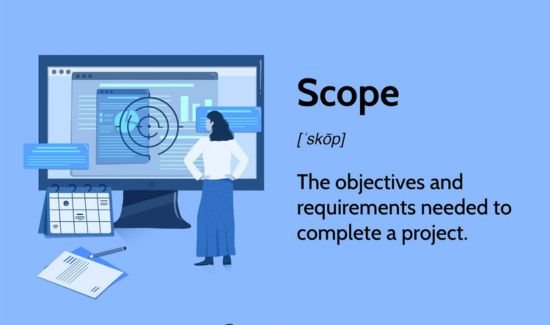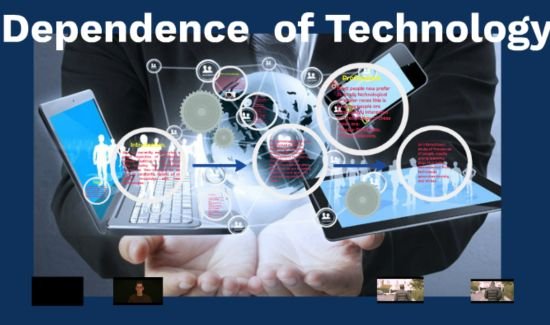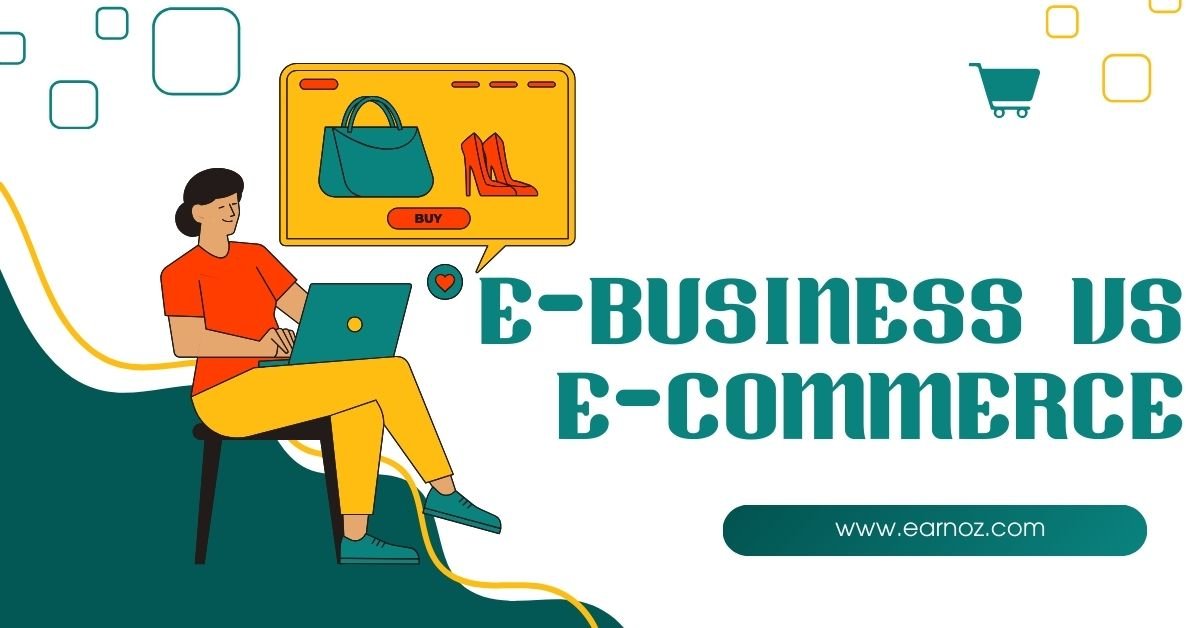Entrepreneurs and small company owners must understand the distinctions between e-business and e-commerce in today’s rapidly changing digital environment. Understanding these ideas is critical since the emergence of internet platforms has completely changed how we do business.
This blog aims to identify the differences between e-business and e-commerce, providing you with insights that can help optimize your business strategy.
Definition
What is E-Business?
All online commercial transactions are called “e-business,” or electronic business. Both internal and external operations are included in this. To increase productivity and efficiency, e-business encompasses various tasks, from managing supply chains to maintaining customer connections.
E-business involves buying and selling goods and services and internal operations like financial management and human resources. Consider e-business a catch-all phrase for commercial activities made possible by digital technologies.
What is E-Commerce?
Electronic commerce, or e-commerce, focuses only on transactions carried out via the Internet. This entails the online purchase and sale of products and services. E-commerce is a more specific term, even if it is a subset of e-business.
E-commerce’s main objective is to facilitate business transactions. Digital payment methods, online marketplaces, and retail websites fall under this category. In contrast to e-business, which deals with every facet of operating a company online, e-commerce is limited to processing payments and making sales.
Key Differences Between E-Business and E-Commerce
Below is an explanation of each key differences between e-business and e-commerce.

1. Scope and Functionality
E-business covers a wider variety of activities compared to the functionality and breadth of e-commerce. It includes every facet of running an online business, from supply chain management to customer interaction management.
On the other hand, E-commerce focuses only on online purchasing and selling products and services.
E-Business vs. E-Commerce
To better serve clients, e-business entails integrating several internal and external operations, whereas e-commerce concentrates on transactions—processing payments, handling orders, and guaranteeing delivery. As a result, e-business provides a more comprehensive method of doing digital commercial activities.

2. Target Audience
Target Audiences for E-Business and E-Commerce
E-business and e-commerce serve diverse audiences, including business-to-business (B2B), business-to-consumer (B2C), and consumer-to-consumer (C2C).
Every audience needs a different strategy. B2B focuses on establishing enduring connections and offering thorough product knowledge. While C2C platforms mostly enable peer-to-peer transfers, B2C platforms prioritize quick transactions and an appealing user experience.
Influence of Target Audience on Operational Approach
An organization’s operational strategy is greatly influenced by its target audience. B2B enterprises, for example, place strongly emphasize bulk order capability and individualized service. To draw in and keep certain clients, B2C companies, on the other hand, frequently make significant investments in marketing and customer support. C2C businesses prioritize developing safe and intuitive systems to build user confidence. Businesses may improve their strategy for success by being aware of these subtleties.

3. Internal vs. External Focus
Internal Focus in E-Business
E-business includes a range of internal procedures essential to a company’s efficient operation. These operations are optimized through many means, including supply chain management and inventory control. By ensuring that all departments collaborate effectively, overall productivity and efficiency are increased.
External Focus in E-Commerce
Conversely, e-commerce handles external commercial transactions. It includes managing client interactions, processing payments, and purchasing and selling products and services online. Reaching clients and enabling smooth transactions is the main objective, as it promotes revenue and sales growth.

4. Technological Dependency
Technological Dependency in E-Business
Technology, particularly customer relationship management (CRM) systems, is critical to e-business. These technologies facilitate data administration and communication, guaranteeing smooth operations and improved client relations.
Technological Dependency in E-Commerce
E-commerce, on the other hand, is dependent on payment gateways and online shopping carts. These technologies manage inventories, streamline transactions, and give users an intuitive user interface. Both industries serve as examples of how technology is essential to their success.

5. Types of Transactions
E-Business Transactions
Online business transactions take many forms. Among these are supply chain management tasks, where digital platforms facilitate the organization and control of inventories and logistics. Electronic Data Interchange (EDI) systems allow business papers to be electronically exchanged in a standardized format, making smoother company processes possible.
Client relationship management (CRM) systems, which assist companies in managing and analyzing client interactions, are utilized in other e-business transactions. ERP systems, which integrate different corporate processes to enhance efficiency and decision-making, are also crucial to e-business.
E-Commerce Transactions
Online retail constitutes the primary focus of e-commerce transactions. This covers everything, from order fulfilment platforms and payment gateways to virtual storefronts and online shopping carts. These systems concentrate on giving clients a flawless shopping experience, from choosing products to completing payments.
The use of digital payments is essential to e-commerce. To improve consumer convenience and security, e-commerce platforms provide a range of payment choices, including digital wallets, credit cards, and other online payment methods.

6. Business Models
E-Commerce Business Models
E-commerce business models, including B2C (business-to-consumer), B2B (business-to-business), C2C (consumer-to-consumer), and C2B (consumer-to-business), have completely transformed the way transactions are carried out. These models use technology to improve client experiences and enable smooth operations. Examples of this technology include websites, mobile applications, and payment systems.
E-Business Business Models
E-business models encompass intranets, CRM systems, ERP systems, and e-commerce. These technologies make automation, effective data management, and integrated communication possible and offer a comprehensive method of controlling corporate operations and raising overall operational effectiveness.
These models offer a more comprehensive approach to corporate management by integrating communication channels, managing data, and automating operations through technology.
Conclusion
Contemporary entrepreneurs and business owners must comprehend the distinctions between e-business and e-commerce. While e-commerce is limited to online purchasing and selling products and services, e-business comprises a broader range of operations, including external and internal online activities and processes.
These differences affect business structures, target markets, and functioning. Understanding the economic effects of both can help develop a successful company strategy. I hope this blog helped you explore the differences between e-business and e-commerce.
If you want to know about the advantages of B2B e-commerce, read this article: B2B E-commerce Advantages and Disadvantages. To learn about the hardware and software requirements for e-commerce, read this article: Essential Guide to Hardware and Software Requirements for E-commerce Success.
FAQs
How does technology play a role in e-business?
Technology in e-business simplifies and automates a range of corporate activities, from supply chain management and inventory control to customer interactions via CRM systems. Within the organization, this integration improves productivity, efficiency, and communication.
What technologies are essential for e-commerce?
Digital storefronts, online shopping carts, and payment gateways are critical e-commerce components. These technologies provide user-friendly customer interactions by managing inventories, facilitating safe transactions, and offering a smooth shopping experience.
Can a business operate both e-business and e-commerce models simultaneously?
A company can indeed combine the two models. For example, a company can utilize e-business procedures to run its internal operations more effectively and use e-commerce platforms to offer goods and services to customers online. This combination can maximize the performance of the firm as a whole.
Why is understanding the distinction between e-business and e-commerce important?
Knowing the difference can help businesses concentrate on improving the appropriate areas. While an awareness of e-commerce can boost sales and enhance customer service, knowledge of e-business can result in more effective internal procedures. It aids in creating successful business plans that are suited to certain objectives.


2 thoughts on “6 key Differences Between E-Business and E-Commerce”